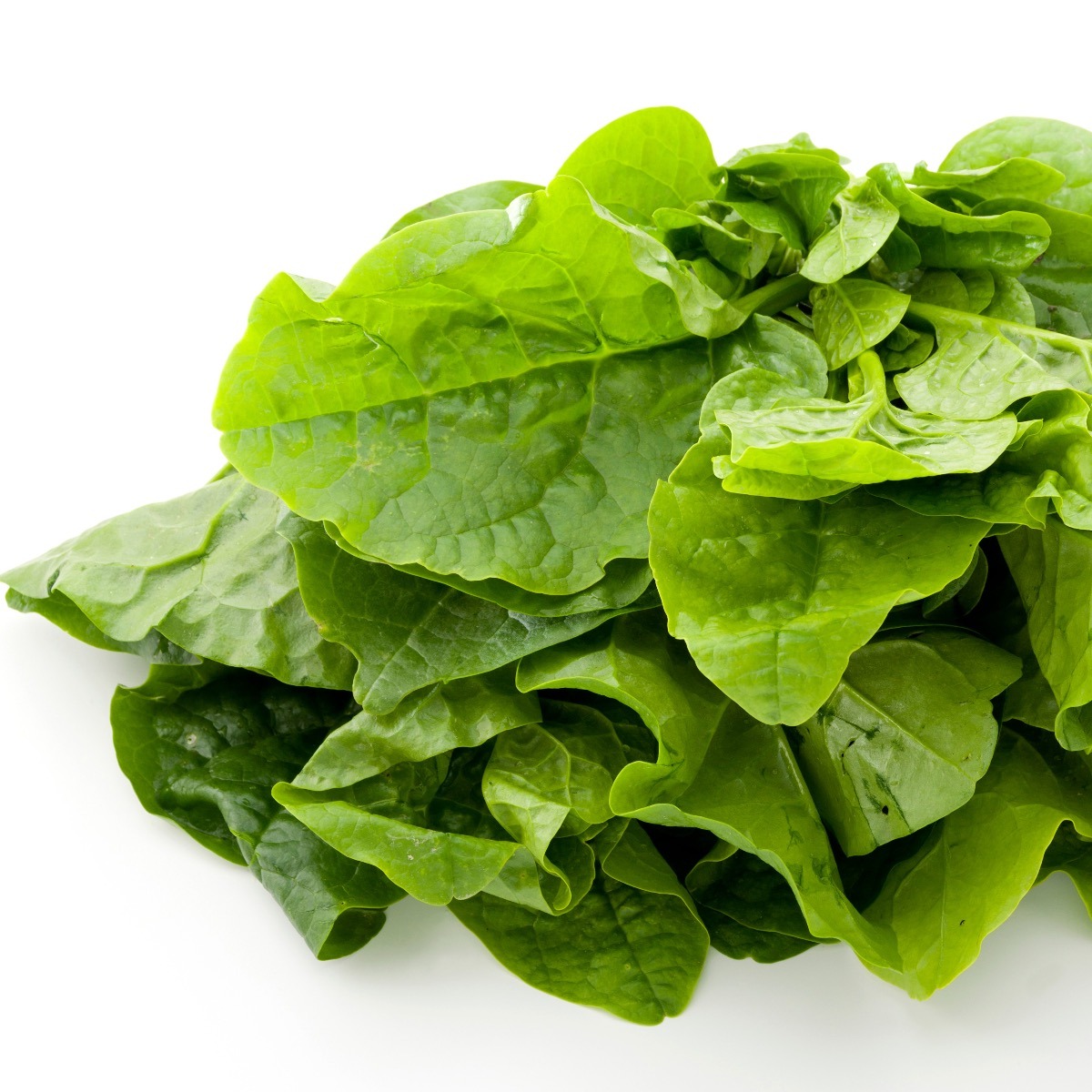I’m strong to the finish ’cause I eats me spinach.
We enjoy a lot of spinach in our house. It is so versatile, you can add it to an omelet in the morning, have a spinach salad in the afternoon and sauté it as a side dish in the evening. Ok, that’s a lot of spinach.
Spinach, scientifically known as Spinacia oleracea, is a leafy green vegetable that belongs to the Amaranthaceae family. It is one of the most nutrient-dense vegetables loaded with vitamins, minerals, and antioxidants. It is a versatile vegetable that can be consumed raw or cooked and is commonly used in various cuisines worldwide. This article will explore spinach’s health benefits, nutritional value, and culinary uses.
History
Spinach is believed to have originated in ancient Persia (modern-day Iran) and was introduced to the Mediterranean region by Arab traders in the 8th century. The ancient Greeks and Romans were familiar with it and used it for medicinal purposes.
However, in the 16th century, it became a popular vegetable in Europe, thanks to Catherine de Medici, the Italian wife of King Henry II of France. Catherine is said to have introduced spinach to France when she moved there in the 16th century, and it soon became a popular vegetable among the French.
European settlers brought it to the United States in the 19th century, quickly becoming a popular vegetable. Today, spinach is grown and consumed worldwide and used in various cuisines, including Italian, Indian, and Middle Eastern cuisine.
In addition to its culinary uses, spinach has been used for medicinal purposes throughout history. The ancient Persians used it to treat inflammation and other ailments, while the ancient Greeks used it as a laxative. In traditional Chinese medicine, spinach is used to tonify the blood and nourish the yin.
Nutritional Value of Spinach
Spinach is a low-calorie vegetable that is packed with nutrients. It is an excellent source of vitamins K, A, C, and folate. Spinach is also a good source of iron, calcium, magnesium, potassium, and dietary fiber. In addition, spinach is rich in flavonoids and carotenoids, which are potent antioxidants that help protect the body against oxidative stress and inflammation.
Health Benefits of Spinach
- Spinach is an excellent vitamin A source, essential for maintaining healthy eyesight. Vitamin A helps protect the cornea, the outermost layer of the eye, and prevents age-related macular degeneration, a leading cause of blindness in older adults.
- Spinach is an excellent source of vitamin K, which is crucial for maintaining strong bones. Vitamin K plays a key role in bone metabolism and helps prevent osteoporosis, a condition characterized by weak bones more prone to fractures.
- Spinach is loaded with antioxidants, which help protect the body against chronic diseases such as heart disease, cancer, and diabetes. The antioxidants in spinach help neutralize free radicals, which are harmful molecules that can damage cells and contribute to developing chronic diseases.
- Spinach is an excellent dietary fiber source, essential for maintaining healthy digestion. Fiber helps regulate bowel movements, prevents constipation, and promotes the growth of healthy gut bacteria.
- Spinach contains compounds that help regulate blood sugar levels, which benefits people with diabetes. These compounds help slow down the absorption of carbohydrates in the digestive system, which helps prevent spikes in blood sugar levels.
Culinary Uses of Spinach

Spinach is a versatile vegetable in various dishes, including salads, smoothies, soups, stews, and casseroles. Here are some popular culinary uses of spinach:
- Spinach Salad is a popular dish that can be made with fresh spinach leaves, sliced strawberries, crumbled feta cheese, and a balsamic vinaigrette dressing. Spinach salad is a delicious and healthy meal that is packed with nutrients.
- Spinach Smoothie is a healthy and delicious way to start your day. To make a spinach smoothie, blend fresh spinach leaves with frozen berries, almond milk, and a scoop of protein powder. Spinach smoothies are a great way to get a dose of vitamins and antioxidants in a convenient and tasty way.
- Spinach Soup is a nutritious and comforting dish with fresh or frozen spinach leaves, chicken broth, onions, garlic, and cream. Spinach soup is a healthy and filling meal perfect for chilly nights.
- Spinach and Feta Stuffed Chicken Breast is a delicious and healthy meal that is easy to make. Mix cooked spinach leaves with crumbled feta cheese and stuff the mixture inside a chicken breast to make spinach and feta stuffed chicken breast. Bake the chicken breast in the oven until cooked and serve with a side of roasted vegetables or a simple salad for a well-rounded meal.
- Spinach and Mushroom Quiche is a delicious and healthy dish that can be enjoyed for breakfast, brunch, or dinner. To make spinach and mushroom quiche, sauté fresh spinach and mushrooms with onions and garlic, and then mix them with eggs, cream, and cheese. Pour the mixture into a pie crust and bake in the oven until golden brown.
Spinach is a nutrient-dense vegetable packed with vitamins, minerals, and antioxidants. It offers numerous health benefits, including promoting eye health, supporting bone health, reducing the risk of chronic diseases, improving digestive health, and regulating blood sugar levels.
Spinach is a versatile vegetable that can be consumed raw or cooked, and it can be used in various dishes, including salads, smoothies, soups, stews, and casseroles. Whether you’re a vegetarian or a meat-eater, spinach is a delicious and healthy ingredient that can be easily incorporated into your diet.
Types of Spinach

There are more types of spinach than you may know, each with its unique characteristics, flavor, and texture. Here are some of the most common types of spinach:
- Flat or Smooth Leaf is the most common type of spinach in grocery stores. It has smooth, flat, and tender leaves with a mild flavor.
- Savoy Spinach has dark green, crinkly leaves slightly thicker than flat-leaf spinach. It has a slightly sweeter and nuttier flavor than flat-leaf spinach and holds up well in cooked dishes.
- Semi-Savoy Spinach is a cross between flat leaf and savoy spinach. It has slightly crinkled leaves with a mild flavor and is ideal for raw and cooked dishes.
- Baby Spinach is harvested when the leaves are still young and tender. It has a delicate flavor and is perfect for salads or garnishes.
- Red Spinach is a deep red and is highly antioxidant. It has a slightly bitter taste and is best used in cooked dishes.
- New Zealand Spinach: It has thick, slightly succulent leaves best suited for cooking. It has a slightly salty taste and is ideal for soups, stews, and casseroles.
- Malabar Spinach is a tropical variety of spinach grown in hot, humid climates. It has thick, fleshy leaves used in Asian and African cuisine.
These are just a few of the most common types of spinach, and many other varieties are available worldwide. Each type of spinach has its unique flavor and texture, and it can be used in various dishes, from salads and smoothies to soups and stews.
Five Fun Facts

- Popeye, the Sailor Man, made spinach famous. The character, who first appeared in a comic strip in 1929, was known for his strength, which he gained by eating a can of spinach. The character’s popularity helped increase spinach consumption in the United States.
- Spinach was once used as a natural dye. In ancient times, spinach was used to dye clothing and other textiles green. The plant contains a pigment called chlorophyll, which gives it its green color.
- Spinach is a member of the Amaranthaceae family, which includes other leafy greens like Swiss chard and beet greens.
- In 2019, a new species of spinach was discovered in Madagascar. Spinach lemna is a wild relative of cultivated spinach and is believed to be an essential source of genetic diversity.
- Spinach is a good source of plant-based protein. One cup of cooked spinach contains about 5 grams of protein, making it an excellent option for vegetarians and vegans looking to add more protein to their diet.
Buying
When buying spinach at the supermarket, remember a few things to ensure you get the best quality and freshest product possible. Here are some tips on what to look for when buying spinach:
- Look for bright green leaves: Choose bright green leaves free of yellowing or brown spots. The leaves should look fresh and crisp.
- Check the stems: The stems should be firm and not wilted or slimy. If the stems are soft or slimy, it may be a sign that the spinach is past its prime.
- Choose the right package: Spinach is sold in various packages, including loose bunches, bags, and clamshells. Choose the package that looks fresher and has the least wilted or damaged leaves.
- Avoid pre-washed spinach: While convenient, it can spoil quickly. If you buy pre-washed spinach, use it within a day or two.
- Check the expiration date: Make sure to check the expiration date on the package before buying spinach. Choose the package with the most extended expiration date to ensure enough time to use it before it goes bad.
Following these tips, you can select the freshest and highest-quality spinach available at the supermarket.
Cleaning Spinach
Cleaning unwashed spinach is an important step to remove any dirt, sand, or other debris that may be present on the leaves. Here’s the best way to clean unwashed spinach:
- Fill a large bowl with cold water: Fill a large bowl with cold water and add a splash of white vinegar or lemon juice. The acid in the vinegar or lemon juice can help to remove any dirt or bacteria that may be present on the leaves.
- Soak the spinach: Place the unwashed leaves in the water bowl and let them soak for a few minutes. Swirl the leaves around in the water to loosen any dirt or debris.
- Lift the spinach out of the water: Use your hands to lift the leaves out of the water and place them in a colander.
- Rinse the spinach: Rinse the spinach under cold running water, making sure to remove any dirt or debris that may still be present on the leaves.
- Repeat if necessary: If the spinach still appears dirty or gritty, repeat the soaking and rinsing process until the leaves are clean.
- Pat dry: Use a clean kitchen towel or paper towel to pat the spinach leaves dry. Avoid rubbing the leaves, as this can bruise or damage them.
Once your spinach is clean and dry, it can be used in your favorite recipes. By following these simple steps, you can ensure your spinach is clean and safe to eat.
Cooking Spinach
- Sautéed Spinach is a simple and delicious way to prepare this vegetable. Heat some oil in a pan, add garlic and onions, and cook for a few minutes. Add the spinach and sauté until wilted—season with salt and pepper to taste.
- Creamed Spinach is a classic side dish made by cooking spinach in a cream-based sauce. To make creamed spinach, sauté some onions and garlic in butter, add flour, and cook for a minute. Whisk in some milk or cream and cook until the sauce thickens. Add the spinach and cook until wilted—season with salt, pepper, and nutmeg.
- Spinach Soup is a healthy and flavorful dish that can be enjoyed as a light meal or starter. To make spinach soup, cook onions and garlic in some butter, add stock and spinach, and simmer until the spinach is tender. Blend the soup until smooth, and season with salt, pepper, and lemon juice.
- Spinach Salad is a fresh and healthy way to enjoy this vegetable. Toss spinach leaves with olive oil, lemon juice, salt, and pepper. Top with your favorite ingredients, such as cherry tomatoes, cucumbers, and crumbled feta cheese.
- Spinach Lasagna is a delicious vegetarian alternative to the classic meat lasagna. To make spinach lasagna, layer cooked lasagna noodles with ricotta cheese, spinach, and Parmesan cheese. Top with marinara sauce and mozzarella cheese, and bake in the oven until bubbly and golden.
The Difference Between Fresh, Frozen, and Canned Spinach
These are all popular options for cooking with this versatile vegetable. Here are some differences between the three:
- Fresh spinach is available year-round and is sold in bunches, bags, or clamshells at supermarkets and farmers’ markets. It has a crisp texture and a mild, slightly sweet flavor. Fresh spinach is excellent for salads and can be cooked in various ways, such as sautéed, steamed, or boiled.
- Frozen spinach is convenient when fresh spinach is unavailable or needs a large quantity. It’s sold in bags or boxes in the frozen section of supermarkets. Frozen spinach is blanched and then frozen, which helps to preserve its color, texture, and nutritional value. It has a softer texture and a more concentrated flavor than fresh spinach. Frozen spinach is great for adding to soups, stews, and casseroles and can also be used as a filling for pies and quiches.
- Canned spinach is cooked and canned in water or brine. It has a soft texture and a slightly bitter taste. Canned spinach is usually high in sodium, so it’s important to rinse it thoroughly before using it. It’s a convenient option for quick meals and can be used in dishes like dips, omelets, and quiches.
Fresh spinach is the best option for salads and when you want a crisp texture and mild flavor. Frozen spinach is great for adding to dishes like soups and stews and when you need a large quantity. Canned spinach is a convenient option for quick meals and when fresh or frozen spinach is unavailable. However, it’s important to remember that canned spinach is usually high in sodium and may have a different taste and texture than fresh or frozen spinach.
Final Thoughts

- Spinach is packed with vitamins, minerals, and antioxidants that are essential for good health. It’s an excellent source of vitamins K, A, C, folate, iron, and calcium.
- Spinach is low in calories and high in fiber, making it an excellent food for weight loss. It can help you feel full for longer and can prevent overeating.
- Spinach is a good source of lutein and zeaxanthin, antioxidants that can help protect the eyes from damage caused by UV rays and aging.
- Spinach contains oxalates, which can bind to calcium and form kidney stones in some people. If you’re prone to kidney stones, limiting your intake of spinach and other foods high in oxalates is best.
- Spinach has been linked to several foodborne illness outbreaks, including E. coli and salmonella. To reduce the risk of illness, wash spinach thoroughly before eating it, and avoid eating it if it appears wilted or slimy.















